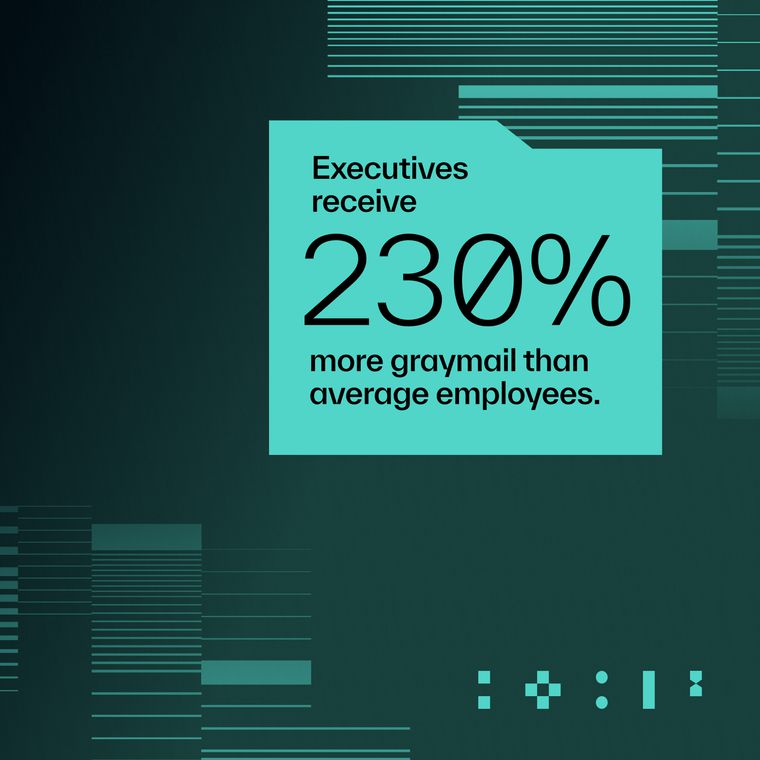Why Security Pros Are Turning to Contextual AI to Strengthen Their Defense Strategy
Explore how contextual AI is reshaping defense strategy for modern security teams.
July 20, 2025
Security teams often become overwhelmed by alerts, while attackers slip through undetected. That is because traditional security tools create overwhelming noise that masks genuine threats and leaves teams scrambling to separate critical incidents from false alarms.
Contextual AI cuts through this chaos by understanding relationships between data points, user behavior, and threat intelligence to determine what truly matters. Instead of reactive triage, you get proactive protection that interprets the context behind every security event.
Modern attackers chain multiple techniques faster than rule-based systems can respond. Contextual AI solves this by learning behavioral baselines and correlating signals across tools to suppress false positives, accelerate detection, and prioritize incidents with the greatest business impact. You gain fewer tickets to chase and faster response times without adding headcount.
Let’s explore why contextual AI is at the forefront of strengthening defense strategies for security professionals.
Understanding Contextual AI
Contextual AI analyzes the complete context around every security signal, allowing you to focus on genuine risk instead of raw noise. This approach ingests telemetry from identity, endpoint, network, cloud, and external threat feeds, then fuses those inputs to understand who is acting, what they're accessing, and why it matters compared to historical norms.
Beyond Traditional Detection
Traditional rule-based tools only flag events matching predefined signatures, treating each log line in isolation. Contextual AI replaces this static approach with dynamic pattern matching that reasons over relationships, including user-to-asset, asset-to-vulnerability, and incident-to-business-process.
When the CFO suddenly downloads gigabytes of data from an unusual location, the system spots the deviation, correlates it with asset sensitivity, and raises alert priority instantly. Graph neural networks map trust relationships while machine learning refines decisions based on analyst feedback.
Measurable Impact
The outcome is clear: fewer false positives, faster detection, automated triage that scales without extra headcount, and richer context that augments human judgment. Contextual AI shifts security operations from reactive firefighting to proactive defense.
Key Challenges Security Pros Face Today
Security teams are under intense pressure: SOC analysts drown in nonstop alerts, advanced attackers slip through visibility gaps, and critical talent shortages persist. Meanwhile, a patchwork of disconnected tools generates more noise than insight, hampering swift incident response.
Let’s understand these key challenges in detail:
Alert Overload Crisis
Security Operation Centers (SOCs) receive several daily alerts, creating dangerous noise that masks genuine threats. Analysts develop "alert fatigue" and unconsciously filter out warnings. Critical threats slip through undetected, hidden within false positives and low-priority incidents.
Sophisticated Adversaries Exploiting Defensive Blind Spots
Today's attackers orchestrate multi-stage campaigns that mimic legitimate user behavior, transition between cloud services, and employ dormant periods to evade detection. Traditional security rules evaluate each action in isolation, failing to recognize connected cyberattack chains. While defenders struggle to correlate events, adversaries exploit this fragmentation to move laterally through networks.
Talent Shortage and Operational Strain
Understaffed SOCs operate with skeleton crews, forcing analysts to manage multiple platforms and complex playbooks. Each context switch erodes focus and extends investigation timelines. This creates a vicious cycle: overwhelmed analysts burn out and leave, further reducing capacity.
Tool Fragmentation and Visibility Gaps
Security architectures consist of disconnected point solutions. Endpoint, network, identity, and cloud tools operate in isolation, requiring manual log correlation for complete threat visibility. When attackers exploit gaps between systems, early indicators disappear into blind spots, delaying response efforts.
Direct Business Impact
These challenges create measurable organizational risk. Mean time to detection and response increases, audit findings accumulate, and skilled professionals seek less overwhelming environments. Each new security tool adds noise rather than strengthening defensive capabilities.
The current security operations model is unsustainable. Organizations must shift from reactive alert management to integrated threat detection platforms that provide context and prioritization. Without this fundamental change, security teams will continue to fight a losing battle against increasingly sophisticated adversaries while burning out their most valuable asset: skilled analysts.
How Contextual AI Addresses These Challenges
Contextual AI unifies the deluge of security data, combining user behavior, asset context, and real-time threat intelligence, to spotlight the few alerts that truly matter and prescribe the fastest path to remediation.
Here’s how it turns overload into clarity:
Cross-Platform Data Correlation
Traditional tools trap you in siloed dashboards; contextual AI breaks those silos by ingesting logs, network flows, identity data, and open-source intelligence. By cross-correlating these feeds, it builds a living graph of relationships that highlights when an ordinary event becomes suspicious, such as a routine file download that coincides with a risky login pattern captured in threat intelligence feeds.
Dynamic Risk Scoring
The system assigns a dynamic risk score to every user, device, and session. Baselines for normal behavior are learned continuously, so the moment activity deviates, such as a finance user accessing code repositories at 2 A.M., the score spikes and the alert rises to the top of your queue. Because the score blends asset value, attacker tactics, and historical context, you focus on genuine threats rather than chasing simple anomalies.
Adaptive Response Automation
Adaptive response flows kick in when risk scores breach thresholds. Contextual AI can quarantine an endpoint, trigger step-up authentication, or launch a SOAR playbook without waiting for manual screen pivoting. This closed-loop learning adjusts in real-time; once you mark an alert as benign, the model downweights similar events going forward, sharpening accuracy with each cycle.
Intelligent Alert Prioritization
Intelligent prioritization dramatically reduces noise. Organizations using contextual AI report significant reductions in alerts that require human review. Your analysts spend their time investigating high-impact incidents instead of sifting through false positives.
Every alert arrives enriched with a narrative, including the attacker's path, affected assets, recommended containment steps, and links to similar historical cases. This context slashes investigation time because you no longer scramble for background data; it's delivered alongside the alert.
Workflow Orchestration
Workflow orchestration turns insight into action. Contextual AI integrates with your SIEM, EDR, and ticketing platforms, pushing automated fixes for low-risk events while flagging complex cases for expert review. The goal is augmentation, not replacement: machines handle repetitive triage and containment, leaving you free to apply strategic judgment where it counts most.
Stop Context-Rich Phishing and Social Engineering
Contextual AI prevents advanced phishing by learning communication patterns and prioritizes critical vulnerabilities, reducing manual alerts. Here’s what you need to know:
Anti-Phishing Protection: Behavioral models learn the communication cadence of each email address, scoring new messages against established baselines. When attackers spoofed a CEO for wire fraud, the platform detected tone and timing deviations, quarantining the message before employees clicked. This blocks socially engineered threats that content filters miss.
Vulnerability Prioritization: AI ranks vulnerabilities by exploitability and asset criticality. When detecting high-severity Common Vulnerabilities and Exposures (CVEs) on domain controllers with suspicious traffic, it escalates immediately while suppressing lower-impact findings.
Contextual AI acts as a digital behavioral analyst, learning the unique "fingerprint" of organizational communication to identify threats that hide in plain sight, transforming cybersecurity from a defensive approach to staying one step ahead of attackers.
Getting Started with Contextual AI
Implementing contextual AI successfully requires focused objectives, clean data integration, and cross-functional collaboration to deliver measurable security improvements.
Inventory Current Security Infrastructure: Identify which logs, behavioral signals, and threat intelligence feeds flow into your SIEM, SOAR, or EDR platforms. Critical data trapped in silos must be exposed through APIs so contextual models can build a comprehensive organizational understanding.
Leverage Existing Integration Capabilities: Validate that current platforms can publish and consume context-enriched alerts. Modern orchestration layers already integrate across security tools and pass risk scores downstream; use these existing capabilities rather than building separate pipelines.
Establish Continuous Feedback Loops: Assemble a cross-functional team of SOC analysts, incident responders, data engineers, and business stakeholders to review AI decisions weekly. Feed their assessments back into models so risk scoring evolves with your threat landscape.
Maintain Strict Data Hygiene: Normalize timestamps, consistently map identities, and tag assets by business value. This disciplined approach prevents skewed baselines and maintains accurate organizational context.
Start with Focused Use Cases: Anchor rollout to one or two measurable objectives like insider threat detection or adaptive phishing response before expanding. Clear objectives prove value quickly and secure executive support.
Success with contextual AI depends on methodical preparation and iterative refinement. Start small, measure impact, and scale systematically to avoid common implementation pitfalls.
Measuring Success
Quantifying the impact of contextual AI requires establishing clear baselines and tracking meaningful business outcomes, rather than relying solely on technical metrics. Here’s how you can measure success:
Define success metrics before deploying contextual AI to capture quantifiable performance improvements.
Establish baselines for false positives, detection times, and analyst escalation rates, then track changes regularly.
Track detection and response times from signal to containment. Improvements in MTTD and MTTR translate directly into reduced business risk.
Compare genuine incident detection rates before and after adoption, weighing the numbers against the business impact of critical data versus low-value assets.
Survey analyst teams quarterly to measure improvements in experience and reduction of fatigue.
Package the results in executive dashboards that connect security improvements to revenue protection, compliance obligations, and operational continuity.
Transforming Your Security Operations with Contextual AI
Contextual AI enables security teams to shift from chasing alerts to proactively anticipating attacks. By correlating identity signals, behavioral baselines, and external threat intelligence, it pinpoints the few incidents that truly matter and recommends the fastest response, slashing alert fatigue and detection time in one step.
Abnormal brings this power to email, the #1 attack vector. Our AI-driven platform enriches every message with contextual insights, including who sent it, how they typically behave, and how it fits into broader threat patterns. This enables analysts to spot business email compromise, supply-chain fraud, and ransomware precursors before damage occurs. The result is fewer false positives, faster investigations, and a proactive security posture that scales without adding headcount.
Ready to see contextual AI in action? Book a demo with Abnormal and learn how AI-powered solutions can elevate your entire defense strategy.
Related Posts
Get the Latest Email Security Insights
Subscribe to our newsletter to receive updates on the latest attacks and new trends in the email threat landscape.


